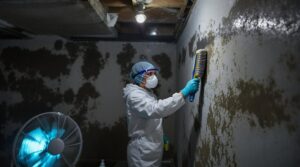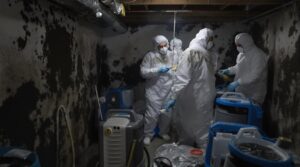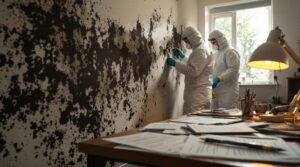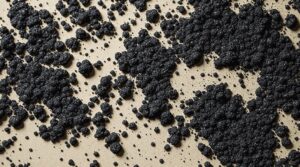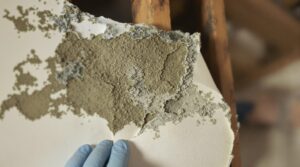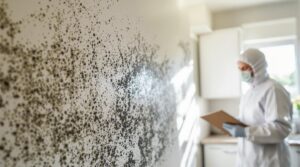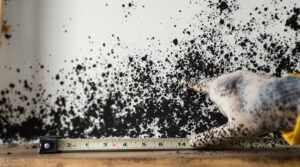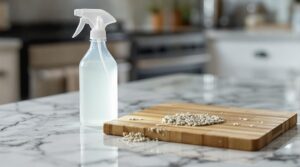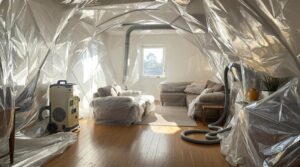Household mold presents significant health and structural risks, commonly appearing as discolored patches or fuzzy growths accompanied by musty odors. Initial symptoms include respiratory issues, eye irritation, and skin rashes, while long-term exposure can lead to chronic conditions and immune system dysfunction. Mold thrives in environments with humidity above 70% and temperatures between 77-86°F, often developing within 24-48 hours of water damage. Professional assessment and remediation provide thorough solutions for safeguarding occupant health and property integrity. To effectively combat household mold, it’s essential to recognize the signs of mold toxicity in homes, which may include persistent fatigue, cognitive difficulties, and unexplained headaches among occupants. Implementing preventive measures such as proper ventilation, regular inspections, and immediate cleanup of water spills can significantly reduce the likelihood of mold growth. Furthermore, addressing moisture sources, such as leaky pipes or inadequate drainage, is crucial to maintaining a healthy living environment.
Key Takeaways
- Common signs of household mold include discolored patches, fuzzy growths, musty odors, peeling paint, and warped wallpaper.
- Mold thrives in areas with humidity above 70%, temperatures between 77-86°F, and poor ventilation, often behind walls or furniture.
- Health symptoms include respiratory issues, eye irritation, skin rashes, and can worsen asthma or trigger severe allergic reactions.
- Long-term exposure risks include chronic bronchitis, memory loss, immune system dysfunction, and increased susceptibility to infections.
- Prevention requires maintaining indoor humidity between 30-60%, regular inspections, proper ventilation, and prompt repair of water damage.
Understanding Household Mold and Its Growth Patterns
Most household molds belong to five common genera that thrive in indoor environments under specific conditions. These include Alternaria with its dark, wool-like appearance; Stachybotrys chartarum, characterized by its black, slimy texture; olive-green to brown Cladosporium; blue-green Penicillium; and Chaetomium, which ranges from white to brown.
Understanding mold growth conditions is essential for managing indoor environments. Molds require specific elements to establish and maintain their ecosystem interaction: adequate moisture levels, organic materials as food sources, temperatures between 77-86°F, and relative humidity above 70%.
While oxygen is essential for their survival, light is not necessary. These organisms spread primarily through airborne spores, which can travel through ventilation systems or become dispersed when colonies are disturbed.
Poor ventilation and damp conditions create ideal circumstances for spore germination and subsequent colony formation, particularly in areas prone to moisture accumulation. When sudden water damage occurs from burst pipes or appliance failures, mold can develop within 24-48 hours if not properly addressed.
Common Signs of Mold Infestation in Your Home

Visible signs of household mold often manifest as discolored patches or fuzzy growths on walls, ceilings, and other surfaces, ranging from black and green to white and gray hues.
Hidden mold sources frequently develop behind wallpaper, inside HVAC systems, and within wall cavities where moisture accumulates undetected.
The presence of persistent musty odors, particularly near air vents, in carpets, or enclosed spaces, serves as a critical indicator of potential mold infestation requiring immediate investigation.
Visible Mold Growth Patterns
Identifying mold growth patterns in residential environments requires understanding the characteristic signs of infestation.
Visible manifestations typically present as black spots or colonies with fuzzy textures on damp surfaces, often accompanied by distinctive stains and discolorations. These patterns frequently emerge in areas prone to moisture accumulation, such as bathrooms, basements, and behind furniture.
Prevention strategies should focus on monitoring high-risk locations where conditions favor mold proliferation, particularly spaces with elevated humidity levels exceeding 50% or poor ventilation.
The presence of peeling paint, warped wallpaper, and musty odors are vital indicators that may necessitate professional mold removal techniques.
Special attention should be directed to HVAC systems and carpeting, as these areas can harbor extensive mold growth while remaining partially hidden from view.
Hidden Sources of Mold
While mold infestations frequently manifest in visible locations, dangerous colonies often develop in concealed areas throughout residential structures, making detection particularly challenging for homeowners.
Common hidden sources include poorly ventilated basements, damp crawlspaces, and wall cavities experiencing moisture intrusion.
Spaces behind furniture and major appliances create ideal conditions for growth due to restricted airflow and potential condensation.
Plumbing installations present particular vulnerabilities, as leaking pipes can sustain persistent moisture levels conducive to mold proliferation.
Professional mold remediation techniques often target these concealed areas using specialized moisture meters and particle counters.
Additionally, effective moisture control strategies encompass maintaining proper ventilation, utilizing dehumidifiers in susceptible spaces, and implementing regular inspection protocols, particularly in areas containing cellulose materials such as drywall, wood, and insulation.
Unusual Odors and Smells
Distinctive odors often serve as the initial indicator of mold presence within residential environments, particularly when infestations develop in concealed locations.
These mold odors typically manifest as musty, earthy, or fermented scents, ranging from damp and stale basement-like smells to sharp, tangy aromas resembling vinegar or spoiled food.
The presence of these unusual odors warrants immediate sources identification and professional assessment, as they often signal active mold growth releasing mVOCs (microbial volatile organic compounds).
These airborne compounds can trigger various health issues, including respiratory problems, headaches, and allergic reactions.
While temporary solutions like ventilation may provide momentary relief, proper remediation requires identifying and eliminating the underlying mold source to prevent both persistent odors and associated health risks.
Health Symptoms Associated With Mold Exposure
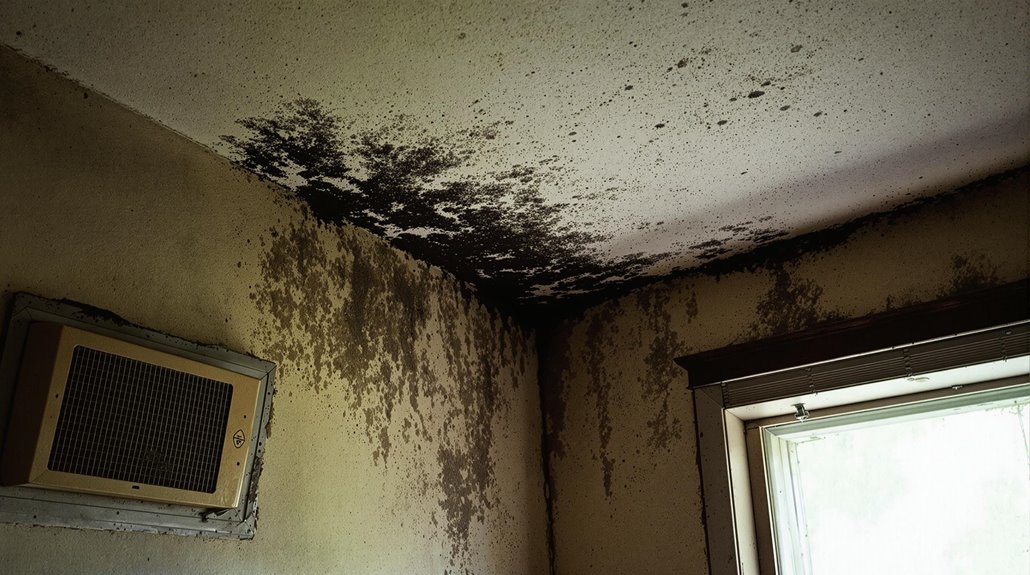
Living in an environment contaminated with mold can trigger a wide range of adverse health effects, from mild allergic reactions to severe respiratory complications. Common symptoms of mold allergies include runny nose, congestion, eye irritation, sneezing, and skin rashes.
More concerning are the respiratory infections and complications that can develop, particularly in individuals with pre-existing conditions or compromised immune systems. Exposure to mold spores may lead to significant respiratory issues, including worsening asthma symptoms, wheezing, and airway obstruction.
Additionally, prolonged exposure can affect cognitive function and mental health, manifesting as memory problems, dizziness, and increased levels of anxiety or depression.
In severe cases, individuals may develop serious conditions such as allergic bronchopulmonary aspergillosis or hypersensitivity pneumonitis. Those with weakened immune systems face heightened risks of systemic infections, while certain mold species producing aflatoxins have been linked to increased liver cancer risk.
Hidden Dangers of Living With Household Mold

While mold exposure may appear harmless initially, prolonged contact can lead to severe respiratory issues, immune system dysfunction, and chronic inflammatory responses in sensitive individuals.
The insidious nature of household mold lies in its ability to flourish unseen within wall cavities, beneath flooring, and above ceiling materials, potentially causing extensive structural damage before detection.
These concealed colonies can release mycotoxins and spores throughout living spaces, creating an increasingly toxic environment that compromises both human health and building integrity.
Mold's Silent Health Impact
The silent invasion of household mold poses significant health risks that often go unnoticed until symptoms manifest. Community health initiatives increasingly emphasize the correlation between mold exposure and chronic respiratory conditions, with statistics showing over 4 million asthma cases linked to dampness and mold.
Mold awareness campaigns highlight how vulnerable populations, particularly children and immunocompromised individuals, face elevated risks of developing serious health complications.
- Respiratory issues include inflammation, coughing, and breathing difficulties
- Allergic reactions manifest through sneezing, itchy eyes, and skin irritation
- Toxic mold exposure can lead to nausea, headaches, and potential lung bleeding
- Chronic conditions may develop, including sinusitis and sleep apnea
Medical professionals emphasize that prolonged exposure can result in persistent health issues, making early detection and remediation essential for maintaining indoor air quality and occupant health.
Behind-Wall Growth Dangers
Hidden mold growth within residential walls represents one of the most insidious threats to both structural integrity and occupant health. The dark, often damp environment behind walls creates ideal conditions for rapid mold proliferation, leading to the release of toxic substances including MVOCs and mycotoxins through electrical outlets and small cracks.
This hidden mold poses particularly severe risks because it can remain undetected while causing significant damage. As the fungi feed on organic building materials like wood and drywall, they compromise structural elements while simultaneously releasing harmful compounds into living spaces.
The resulting health effects can range from respiratory issues and severe headaches to long-term neurological complications. Professional mold remediation becomes essential, as proper containment and removal require specialized equipment and expertise to prevent further contamination during the treatment process.
Long-Term Health Risks and Medical Complications
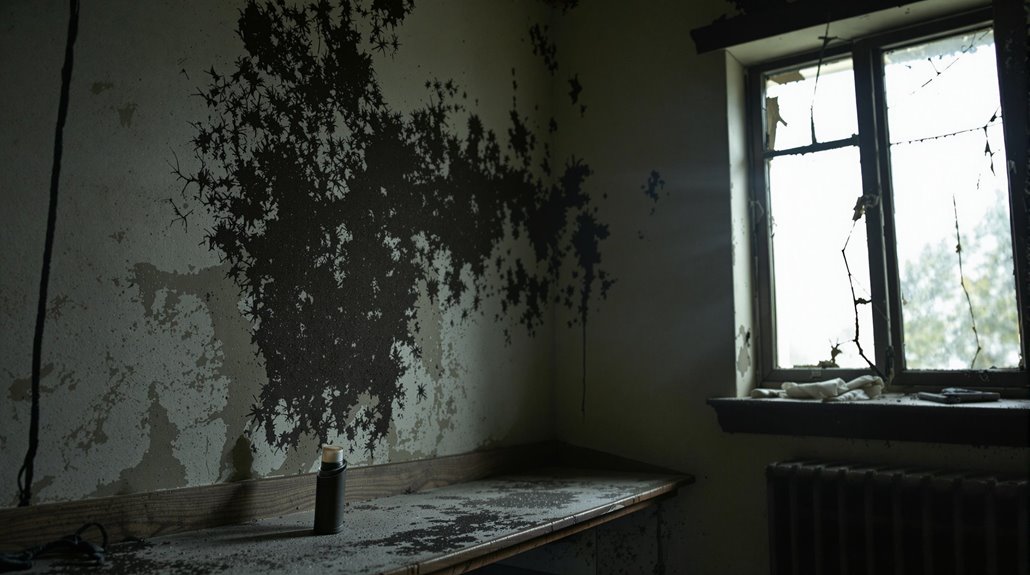
Living in an environment with persistent mold exposure can lead to severe and lasting health complications that extend far beyond simple allergic reactions. The long-term effects can manifest as chronic illnesses affecting multiple body systems, particularly respiratory, neurological, and immune functions. Research indicates that prolonged exposure to mycotoxins can result in cognitive dysfunction, persistent fatigue, and immune system suppression.
- Respiratory complications include chronic asthma, bronchitis, and hypersensitivity pneumonitis, which can cause permanent lung damage.
- Neurological effects manifest as memory loss, difficulty concentrating, mood disorders, and cognitive impairment.
- Immune system dysfunction increases susceptibility to infections and may lead to chronic inflammatory conditions.
- Severe cases of mycotoxicosis can result in organ damage, particularly affecting the liver and gastrointestinal system.
These health risks are particularly pronounced in individuals with compromised immune systems, preexisting conditions, or genetic susceptibilities to mold-related illnesses. The development of these conditions often correlates with the duration and intensity of exposure.
Protecting Children and Vulnerable Populations
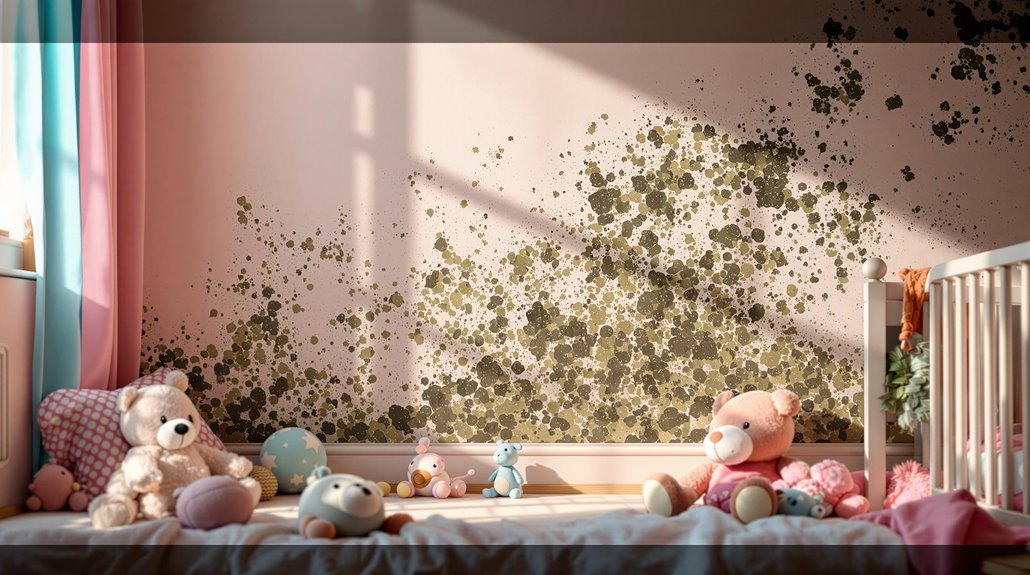
While long-term health risks affect all populations, children and immunocompromised individuals face heightened susceptibility to mold-related health complications.
Children's developing immune systems and smaller airways make them particularly vulnerable to respiratory health concerns, with exposure potentially disrupting normal immune system development and increasing their risk of developing allergies and asthma later in life.
Effective mold prevention strategies are essential for protecting vulnerable populations, including infants, elderly individuals, pregnant women, and those with compromised immune systems.
Maintaining indoor humidity levels below 60%, ensuring proper ventilation, and conducting regular inspections of moisture-prone areas can greatly reduce exposure risks.
When mold is detected, prompt professional remediation is important, particularly for large-scale infestations.
The severity of health impacts, ranging from respiratory distress and neurological symptoms to skin irritation and eye inflammation, underscores the importance of implementing thorough preventive measures to safeguard vulnerable individuals from mold exposure.
Essential Steps for Mold Prevention
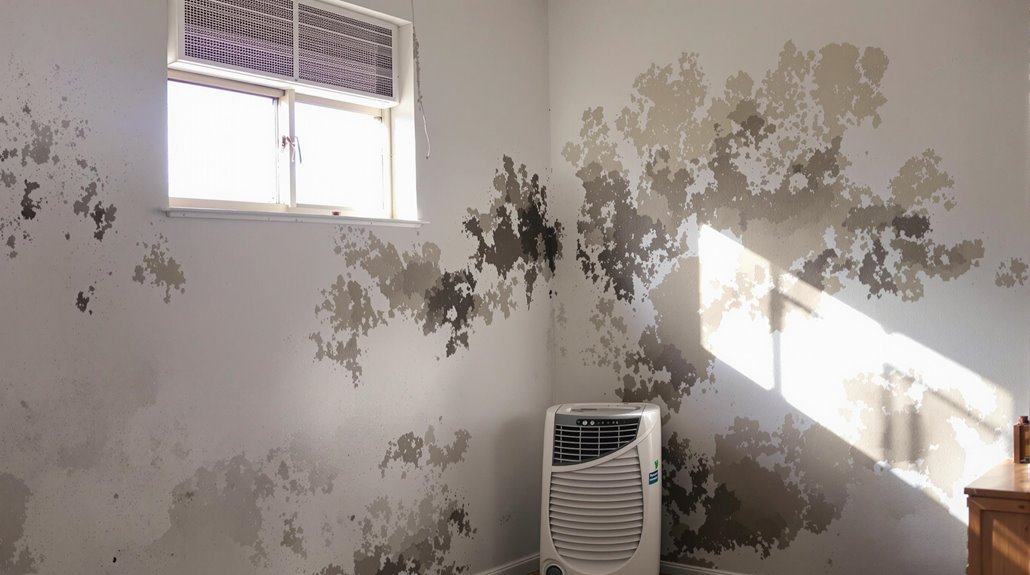
Implementing extensive preventive measures is crucial for minimizing the risk of mold growth in residential environments. Effective humidity control stands as a cornerstone of prevention, requiring indoor levels to be maintained between 30 and 50 percent through dehumidifiers and proper ventilation systems.
Regular roof inspection and maintenance, including prompt repair of leaks and proper gutter function, protect the home's structural integrity against water intrusion.
- Utilize dehumidifiers and exhaust fans in moisture-prone areas while ensuring proper ventilation throughout the house
- Conduct routine inspections of roofing, plumbing, and structural components to identify and address potential water issues
- Maintain ideal air circulation through strategic furniture placement and HVAC system maintenance
- Select and install mold-resistant building materials in susceptible areas like bathrooms and basements
Combining these preventive strategies with prompt response to water incidents creates a thorough approach to mold prevention, safeguarding both the structure and its occupants.
Professional Mold Removal and Remediation Options
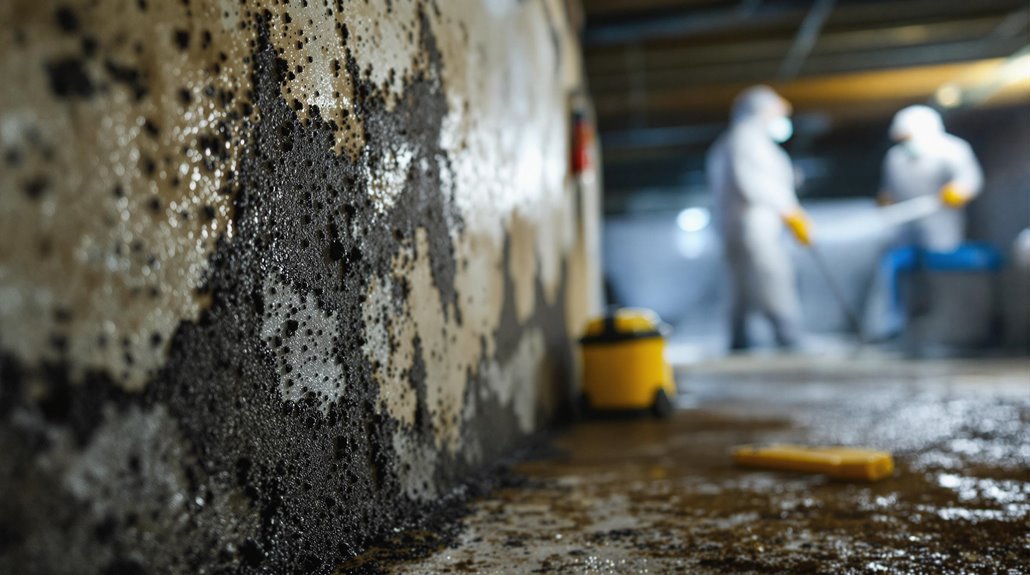
When preventive measures fail to halt mold growth, professional mold removal and remediation services provide extensive solutions for addressing contamination. These services employ various specialized techniques, including dry ice blasting, air treatment with HEPA scrubbers, and mechanical removal methods such as wire brushing and sanding.
Professional remediation effectiveness depends on a systematic approach that begins with thorough assessment and containment. Technicians isolate affected areas using plastic barriers, repair moisture sources, and remove unsalvageable materials.
Advanced mold removal methods often combine HEPA filtration systems with targeted cleaning techniques to guarantee detailed decontamination.
Post-remediation protocols are equally critical, involving deep cleaning of surfaces, proper disposal of contaminated materials, and implementation of ventilation improvements.
Professional services typically conclude with thorough reassessment to verify complete removal and prevent recurrence, guaranteeing both structural integrity and occupant safety are maintained throughout the process.
Best Practices for Maintaining a Mold-Free Environment
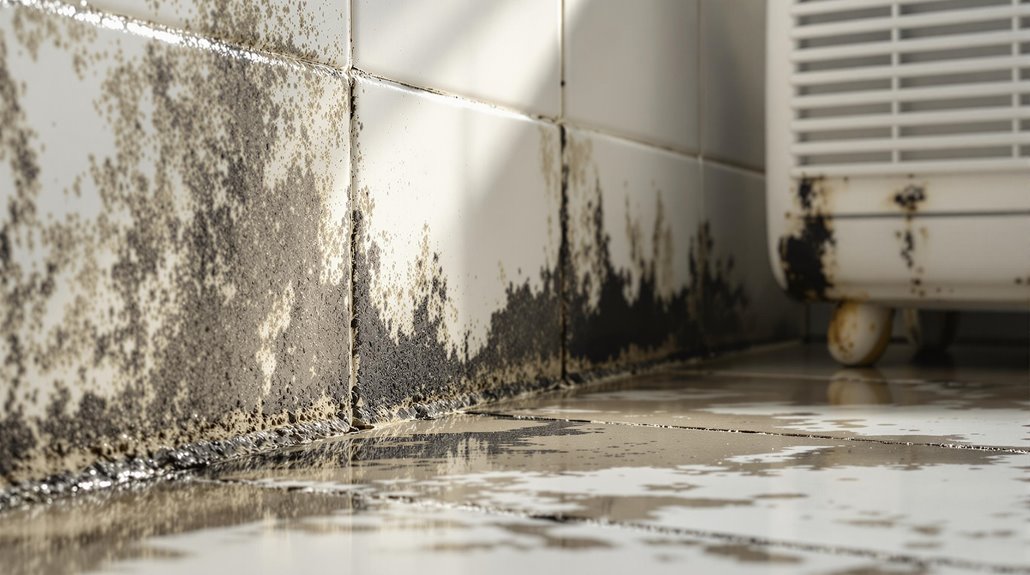
Maintaining a mold-free environment requires an extensive approach that combines moisture control, proper ventilation, and regular maintenance protocols.
Key strategies include implementing proper drainage systems, maintaining ideal humidity levels between 30-50%, and guaranteeing adequate air circulation throughout the home.
Regular inspection and cleaning of moisture-prone areas, combined with the use of mold-resistant materials and antimicrobial products, markedly reduce the risk of mold growth.
- Install ventilation fans in high-moisture areas and maintain proper moisture control through dehumidifiers and air conditioning systems
- Clean gutters regularly, verify proper ground slope away from foundations, and address water leaks promptly
- Use mold-resistant building materials and vapor barriers in susceptible areas, particularly basements and bathrooms
- Monitor indoor plants for overwatering, maintain cleanliness in high-risk areas, and reduce clutter to improve air circulation
These preventive measures, when consistently applied, create an environment that inhibits mold growth while promoting healthy indoor air quality for occupants.
The Benefits Of Consulting A Public Adjuster

Public adjusters bring specialized expertise in mold-related insurance claims, offering professional guidance through complex policy interpretations and documentation requirements.
Their objective assessment methods help identify both visible and hidden mold damage while ensuring thorough documentation of all affected areas for maximum claim coverage.
Through systematic negotiation approaches and intimate knowledge of insurance procedures, public adjusters often secure higher settlement amounts and expedite the claims process for property owners.
Expertise In Insurance Claims
In cases of extensive mold damage, managing the complexities of insurance claims requires specialized expertise and thorough understanding of policy provisions. Public adjusters provide extensive claim strategy development and detailed policy analysis to guarantee maximum coverage for mold-related damages.
Their expertise extends beyond basic claim filing, encompassing thorough documentation, damage assessment, and strategic negotiation with insurance providers.
- Systematic documentation of mold damage extent and associated property impacts
- Expert interpretation of policy language and coverage limitations
- Strategic negotiation with insurance carriers for ideal settlement outcomes
- Professional guidance through complex claim procedures and requirements
Public adjusters' specialized knowledge enables policyholders to navigate intricate claim processes effectively while guaranteeing proper valuation of mold-related damages.
Their expertise often results in more favorable settlements and expedited claim resolution, particularly in cases involving extensive remediation requirements.
Objective Damage Assessment
Professional damage assessment through a public adjuster brings objectivity and depth to mold-related insurance claims. Using advanced mold inspection techniques, adjusters conduct extensive evaluations to identify visible and concealed damage while determining the root causes of mold growth, such as water infiltration or inadequate moisture control solutions.
The assessment process includes detailed documentation through photographs, videos, and written reports that capture the full scope of damage to both structure and contents.
Public adjusters evaluate which items require replacement versus restoration, estimating accurate repair costs based on current market values. Their systematic approach guarantees that all evidence is properly preserved and documented, meeting insurance company requirements while establishing a solid foundation for claim negotiations.
This methodical evaluation helps secure fair compensation for property owners affected by mold damage.
Streamlined Claim Process
Seeking assistance from a public adjuster streamlines the entire mold damage claims process through expert policy navigation and thorough case management. These professionals apply effective claim strategies while managing all documentation, communication, and negotiations with insurance companies.
Their extensive understanding of mold insurance policies guarantees compliance with requirements and expedites claim resolution.
- Expert assessment and documentation of mold damage to support maximum claim value
- Professional handling of complex paperwork and policy requirements to prevent delays
- Strategic negotiations with insurance companies to secure fair settlements
- Proactive management of potential complications to maintain efficient processing
Public adjusters notably reduce property owners' administrative burden while guaranteeing adherence to legal requirements and policy conditions.
Their specialized knowledge helps avoid common pitfalls that could otherwise delay or diminish claim settlements, ultimately facilitating faster recovery and restoration.
Higher Claim Payouts & Settlements
When consulting a public adjuster for mold damage claims, property owners typically secure higher claim payouts and more favorable settlements due to the adjuster's specialized expertise and negotiation skills. Through proven claim recovery strategies and advanced insurance negotiation tactics, public adjusters maximize compensation by conducting thorough damage assessments and identifying hidden costs that might otherwise go unnoticed.
| Key Benefits | Professional Outcomes |
|---|---|
| Expert Policy Knowledge | Enhanced Settlement Values |
| Thorough Documentation | Complete Damage Coverage |
| Strategic Negotiations | Maximum Policy Utilization |
| Evidence Collection | Expedited Claim Resolution |
Operating on a contingency basis, public adjusters align their interests with policyholders while leveraging their deep understanding of insurance procedures and regulatory requirements. Their professional expertise in dispute resolution and detailed documentation guarantees prime claim outcomes for property owners affected by mold damage.
About The Public Claims Adjusters Network (PCAN)
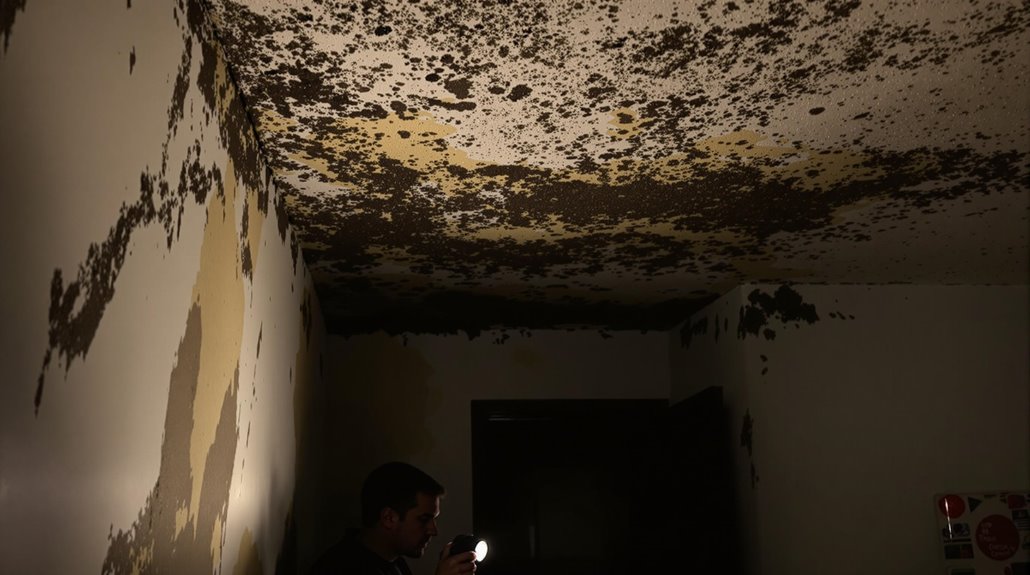
The Public Claims Adjusters Network (PCAN) serves as an established alliance of licensed insurance claims professionals who specialize in representing property owners during insurance claim negotiations. Their public adjuster roles encompass extensive claims handling solutions, from initial loss documentation to final settlement negotiations.
PCAN operates on a contingency basis, eliminating upfront costs while delivering consistently higher claim settlements.
- Daily and catastrophic (CAT) adjusters available for both routine and disaster-related claims
- Professional call center services providing immediate support and status updates
- State-certified professionals maintaining strict regulatory compliance
- Demonstrated track record of increasing claim payouts by 747 percent
PCAN redefines industry standards through decades of claims negotiation experience, offering tailored solutions for each unique situation.
Their network manages the entire claims lifecycle, ensuring property owners receive maximum compensation while reducing the stress associated with complex insurance processes. This systematic approach combines technical expertise with dedicated client advocacy throughout every phase of the claims process.
Frequently Asked Questions
Can Household Pets Die From Mold Exposure in Homes?
Severe mold exposure can be lethal to household pets, causing critical respiratory distress, neurological complications, and organ failure. Pet health deteriorates progressively when animals inhale or ingest toxic mold spores.
Does Homeowner's Insurance Typically Cover Mold Damage and Removal Costs?
Homeowner's insurance covers mold damage only when resulting from covered perils like sudden water damage. Standard policies limit mold insurance coverage and removal cost implications, typically ranging between $1,000-$10,000 per occurrence.
How Quickly Can Black Mold Grow After a Water Leak?
Black mold can begin growing within 24-48 hours after a water leak occurs. Under ideal conditions of temperature, humidity, and organic material presence, visible colonies typically develop within 3-12 days.
Should I Test for Mold Before Buying a House?
Professional mold testing is strongly recommended before home purchase, as standard home inspections often miss hidden mold growth that could indicate serious moisture issues and potential health hazards.
Can Mold Travel Through Heating and Air Conditioning Systems?
While HVAC systems provide essential climate control, they simultaneously create pathways for mold spores to spread throughout buildings via air circulation, affecting multiple spaces through connected ductwork and vents.
Final Thoughts
Proper mold remediation and prevention remain critical for maintaining both structural integrity and occupant health. In a 2021 case study from Boston, Massachusetts, a family of four experienced chronic respiratory issues until a certified public adjuster discovered extensive black mold behind their kitchen walls, leading to a successful insurance claim and professional remediation. Understanding mold's risks and securing qualified assistance can prevent both health complications and property damage.
For homeowners dealing with mold or other property damage covered by their homeowners insurance policy, insurance industry insiders and legal experts strongly advise consulting a qualified state-licensed public adjuster. Public adjusters work exclusively for policyholders, not insurance companies, serving as dedicated advocates throughout the claims process. These state-licensed professionals help navigate complex insurance policies, identify hidden damages often unknown to policyholders, thoroughly document losses, and negotiate with insurance companies to ensure fair settlements while protecting policyholder rights.
Having a public adjuster on your side can maximize claim payouts, expedite the claims process, and reduce the stress of dealing with insurance companies, allowing you to focus on recovery. Policyholders seeking expert guidance for their property damage or loss claims can request a no-obligation free consultation with a Public Claims Adjusters Network (PCAN) member public adjuster for professional assistance.
References
- https://greenorchardgroup.com/7-warning-signs-of-mold-in-your-home/
- https://realtimelab.com/mold-statistics/
- https://www.medicalnewstoday.com/articles/288651
- https://jenkinsenvironmentalservices.com/early-signs-of-mold-in-a-house/
- https://www.truthaboutmold.info/statistics
- https://rainbowrestores.com/blog/mold-identification
- https://www.healthline.com/health/mold-in-house
- https://www.broomecountyny.gov/sites/default/files/dept/hd/pdfs/ControllingMoldInTheHome.pdf
- https://www.familyhandyman.com/list/common-types-of-mold-in-the-home/
- https://jselabs.com/blog/mold-infestation-in-hvac/
